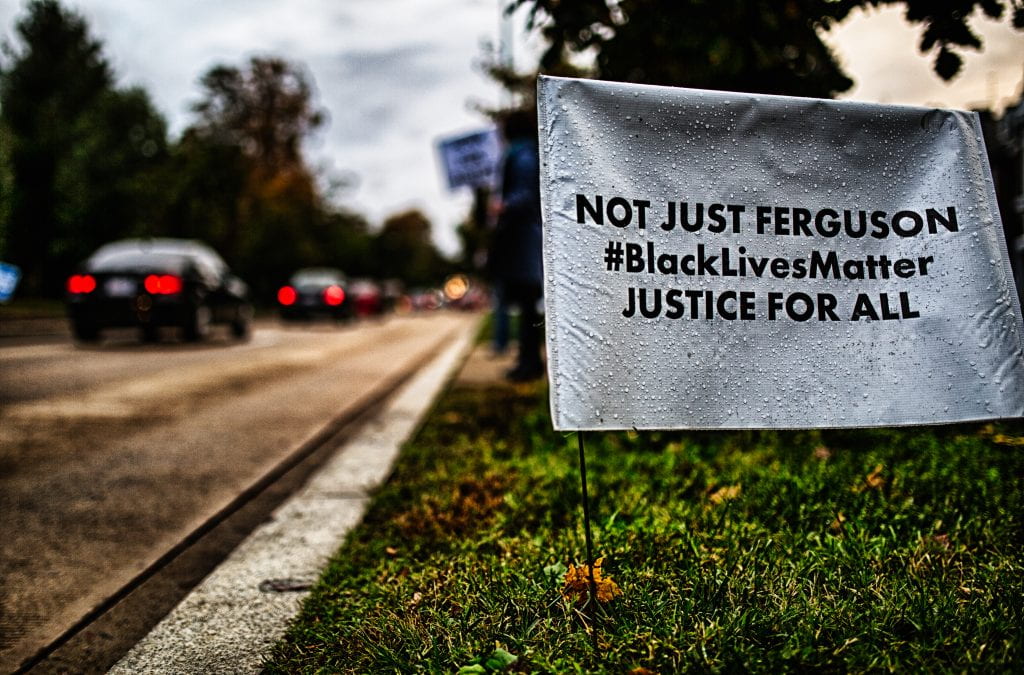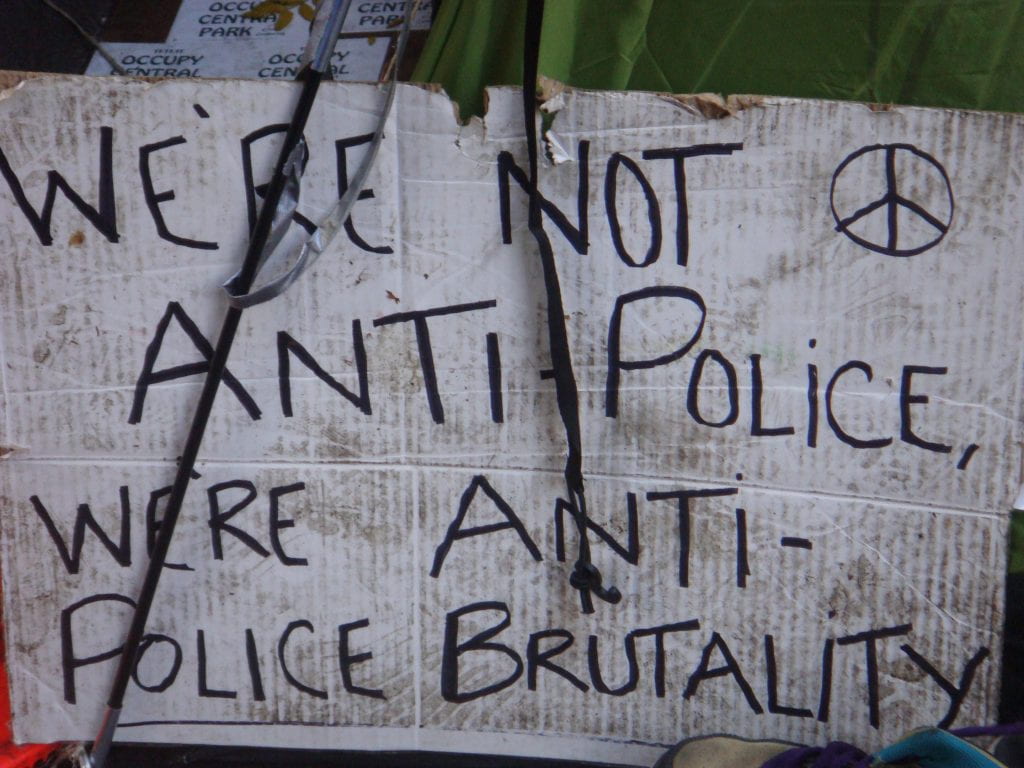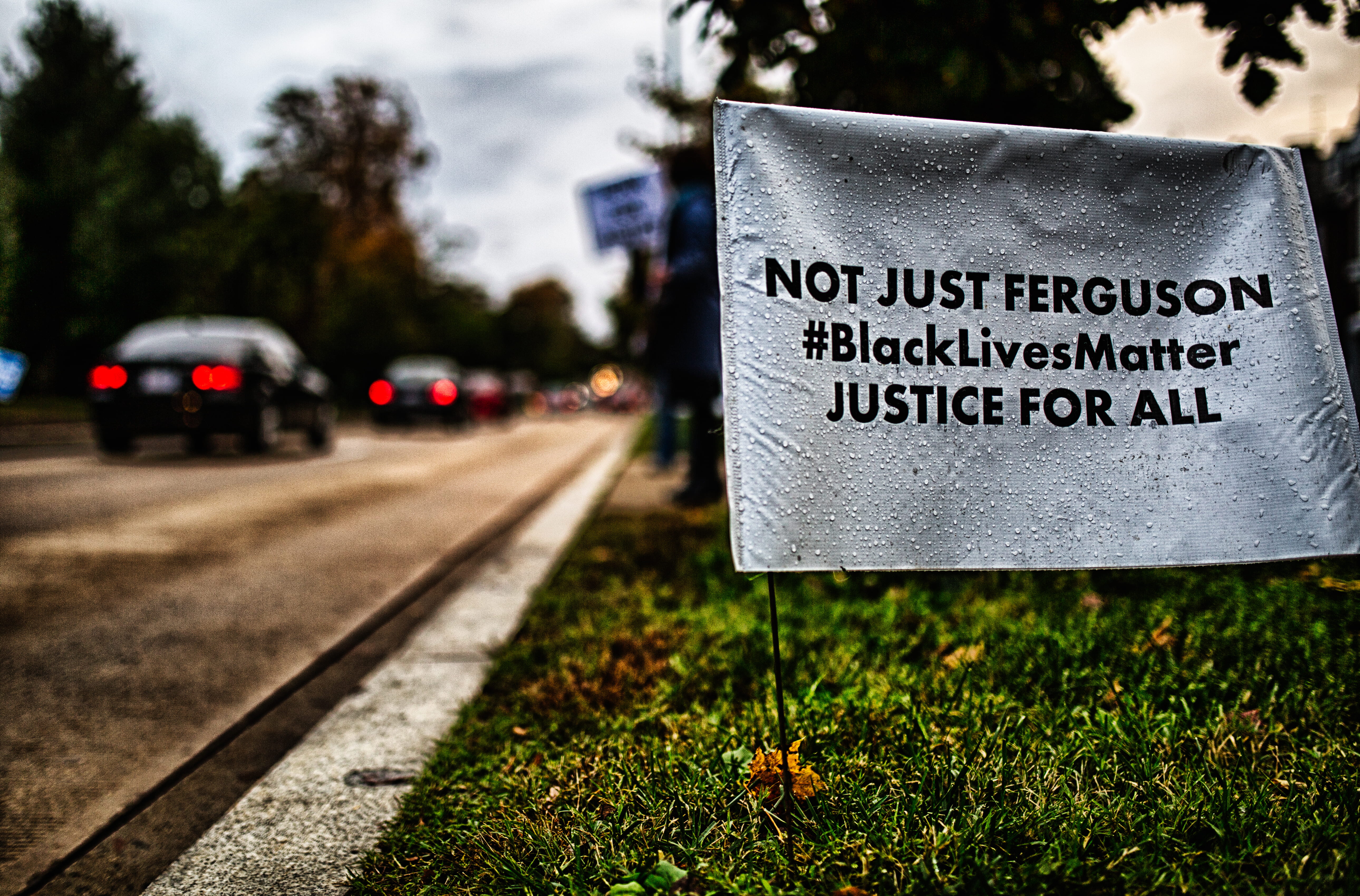
On Thanksgiving evening, while many of us were still enjoying or recovering from a day of family and feasting, Emantic Bradford Senior – who is currently battling cancer – was waiting for his son EJ to come help him with his chemo medicine. “He was my best friend,” Senior says, “and my nurse. He treated me like I was his kid.” As EJ got ready to leave his father’s house that night, Senior, as he always did, asked his son if he needed any money. EJ was on his way to join eager Black Friday shoppers at the Galleria in Hoover. Late that night, Senior’s stepson woke him up. “You talked to EJ?” he asked. “Not since he left the house,” Senior responded, rousing himself. He showed Senior his phone, opened to a video posted on Facebook depicting a chaotic scene at the Galleria, shoppers running and screaming in panic. At this point, the Hoover Police Department had released a statement that there had been an altercation at the shopping mall around 10:00 PM and that police had shot and killed the instigator as he fled the scene. We’re “very, very proud” of the response of our officers, the statement said, for “engaging the subject and taking out the threat.” It was 12:30 AM. Emantic Bradford Junior – EJ – had been dead for two and a half hours at this point, but this would not be confirmed to the family until the next morning. Seeing the social media reports, Senior immediately called the Hoover PD to ask if the police had killed his son. “We’ll call you back in 10 minutes,” they told him. Ten minutes went by, no phone call. Senior called back. Again, “Someone will have to call you back.” This went on for a while until Senior finally demanded to know if that was his son – lying lifeless and uncovered on the cold, white floor – in the photos on Facebook. “I’m sorry, sir, I can’t give you any information at this time. You’ll have to call the county.” In frustration and terror, Senior calls the county police – he is put on hold, transferred, put on hold again, until finally a man gets on the line and confirms that yes, EJ is dead. Several hours go by, and the Hoover PD releases another statement: we got the wrong guy.
EJ had been shot and killed by a police officer who wrongfully assumed that he was the person instigating violence at the mall that night. In the precious hours between the police department applauding the officer’s “heroic” actions for stopping a violent crime and admitting that EJ “very likely wasn’t the shooter,” EJ’s image was misconstrued and misrepresented in the news and on social media – at first, to fit the profile of a killer, and later, as someone who made some bad choices that resulted in his untimely death. There was a desperation to prove that this situation was different, that it was an isolated incident, and that it did not serve as an example of police brutality against people of color. A narrative about EJ’s life and the circumstances of his death was planted, one that justified the officer’s actions and placed the blame on EJ himself. And this is where we end up:
EJ had a gun.
Right…and Trayvon Martin was wearing a hoodie. Eric Garner was hustling cigarettes. How could we know that Tamir Rice was holding a plastic toy and not a real gun? And maybe the most egregious justification of all: Michael Brown “looked like a demon.” There is always some way to extract the wrongful killing of a black man by police officers from the systemic problem of police brutality. There is always something we can point to and say well, this had nothing to do with skin color and everything to do with…fill-in-the-blank.
But let’s be clear: EJ wasn’t shot because he was carrying a gun (which he was licensed to own and trained to use). EJ was not perceived as a “good guy with a gun.” EJ didn’t brandish a weapon in the sense of acting threateningly with it. He didn’t have to – he was the weapon. And the words of Claudia Rankine ring in our ears:
“Because white men can’t
Police their imagination
Black men are dying”
The unnamed officer didn’t regard EJ as a person in that moment but as a black man with a gun, which in his imagination and under Alabama law, justified three shots to the back, ending EJ’s life. But we can’t help but wonder – to appropriate Matthew McConaughey’s powerful line in A Time to Kill – what would have happened if EJ were white. Even mass shooters – who are nearly always white – are often apprehended by police officers without being harmed. When they do die, it’s usually because they take their own lives. For example, after he opened fire on unsuspecting worshipers at the Emanuel AME Church in Charleston, police chased Dylan Roof through two states before they caught him and took him to Burger King to get something to eat. Travis Reinking had a history of mental illness, had threatened violence multiple times, his many firearms had been confiscated – and then returned – before he walked into a Waffle House and shot four people. “He just didn’t seem like a violent person,” one coworker said of Reinking, joining with others who insisted that he was “intelligent and polite.” Reinking fled the scene, and officers chased him into the woods before he was apprehended unharmed. At a movie theater in Aurora, police mistook James Eagen Holmes for a fellow officer because of “the tactical clothing he was wearing.” In other words, he looked like them. But one look at EJ Bradford, and that was it. A black man holding a gun, standing near the victim…bang, bang, bang.
I imagine that police officer didn’t walk into that shopping mall that night intending to kill a black man. The nature of the situation forced him to make a snap judgement, and according to the official report, it took about three seconds to assess the situation, identify EJ as the target, and take him out. And it wasn’t until his family started demanding answers that they even questioned whether or not they had gotten the right guy. Ultimately, it was concluded that the officer “reasonably exercised his official powers, duties, or functions” when he fired those shots. And in a legal sense, it’s hard to argue with that. But we need some context here – there is a larger problem that must be addressed.

The lives of black people in the United States have been and continue to be conditioned and defined by violence – structural, institutionalized, everyday violence and brutal retaliation by the state and other groups against their demands to be seen and heard and regarded as human. Black bodies are weaponized in the popular imagination, associated with crime and danger, and the full participation of black people in society is subjugated by a collective consciousness that centralizes whiteness and systematically excludes people of color. The truth is that compared to white people, people of color are disproportionately killed by police officers in the United States. This is not because all white police officers are explicitly racist but because of where we hold space for black bodies in our broader cultural ethos. What gives police brutality its life force is the same thing that makes it harder for black people to buy houses, get into college and acquire health insurance. This refined yet insidious form of racism resides deep in our collective consciousness, and it engenders the unspoken but deeply felt sentiment that non-whites are threatening and dangerous, that we need the state to protect us from them.
And where does this come from? When slavery ended, the South (and eventually the rest of the country) adopted slightly more palatable systems of subjugation and discrimination against the newly freed citizenship. The preservation of the white male patriarchy depended on one thing – fear. As long as white people continued to be terrified of black people, white supremacy reigned unimpeded. Over time, laws ensuring civil rights and protections for people of color were slowly updated and selectively enforced. To be sure, these were victories. Progress, however, is not a zero-sum game. As overt ideals and expressions of racism were put asunder on paper, they didn’t go away. Instead, they burrowed down deep inside of our subconscious. On the surface, we developed new ways of explaining the unequal distribution of resources and power and opportunity without ever outwardly implicating skin pigmentation. We relegated black people to conditions of poverty, denied all but a few access to the middle class, and then blamed those left behind for bringing about their own woes. We associated violence in black communities not with poverty and lack of access but with blackness itself. We moved black bodies from the plantation to the prison system, once again denying them their freedom, but this time blaming them for it. Not all of them, of course, but enough to sustain the image and the fear.
Shop owners at the Galleria will tell you that there is a “black” side and a “white” side of the mall. Where do you think the police presence was concentrated that night? When it comes to spaces occupied by black bodies, the police force tends to emphasize the “force” over the policing. And yet…“You just don’t bring guns into a crowded mall,” the Hoover mayor admonished in his statement about the wrongful killing. How ironic. Okay, Mr. Mayor, tell that to the NRA. Better yet, if that’s such an obvious unspoken rule, try to make it a law in Alabama and see how far you get. At the very least, say what you mean: if you’re black, don’t carry a gun into a shopping mall. Because for people of color, certain constitutional rights must be qualified.
This is refined racism: when white people hear of the wrongful killing of a black man by police officers, we latch on to some element of the story that distracts us from the color of the victim’s skin and emphasizes some other factor that explains the officers’ actions. Rather than trying to understand what it means to be a black person in this country, to confront our own implicit biases and to acknowledge our complicity in upholding a racist social order, we look for something, anything, to assure ourselves that this was an isolated and unavoidable incident (at least on the part of the officer). In doing so, we sustain the devaluation of black bodies and black minds and justify the power of the state to marginalize people of color, to treat them as an inconvenience and to perceive them as a threat that needs to be neutralized by whatever means necessary. In situations like this, that is where our minds naturally go. We make our excuses, we qualify our apologies, we blame the victim. The story gets whitewashed. And just like that, Trayvon’s death, Philando Castille’s death, EJ’s death are their own faults.
So how do we change this reality? It is going to take more than providing courses to police officers on racial sensitivity and limiting the use of force. If we truly want to live in a world where the state treats people of all skin tones equally, white people must police their imaginations. We must actively work to decentralize whiteness, aggressively refute the narrative that people of color pose a threat to our society, and unequivocally demand that they be protected rather than forcibly policed. The political justice system won’t change until our collective consciousness changes, until we break ourselves of false equivalencies and false associations around blackness, until we recognize what the enduring legacy of slavery and centuries of subjugation and oppression have done to individuals and families and communities, until we give the black man a chance to be the good guy. We are all stakeholders in this process; if we’re going to move forward as a society, we have to do it together.
The Galleria reopened at six o’clock the next morning, as scheduled, because consumer capitalism can’t be bothered by the death of a black man. The Christmas shopping season went ahead full stride, while Emantic Bradford Senior was left to mourn the death of his son, to contend with his disease alone, to wallow in the pain of never again getting to hear his son call him ‘daddy.’ After two months of investigation, the Attorney General of Alabama ruled that the nameless officer who shot and killed EJ was “justified” in doing so. Under Alabama law, no crime was committed. But EJ’s mama, April Pipkins, leaves us with an important question: “If this happened to your child, would you still call it justice?”
The answer is no, you would call it murder.

